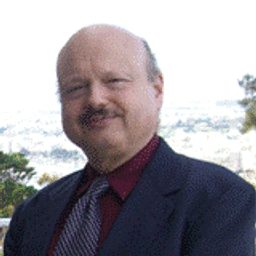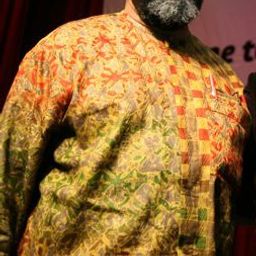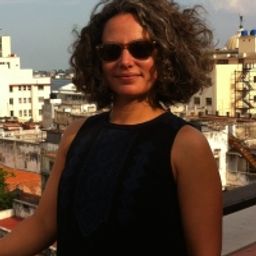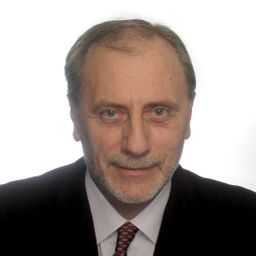
Dr. Diego Rotman
He is part of the research center “Daat Hamakom” Center for the Study of Cultures of Places in the Modern Jewish World, Hebrew University of Jerusalem (2013 to date), is part of the research group “The Imaginary Republic” based on Bergen Academy of fine arts and directed by Prof. Brandon Labelle. He was part of the academic team of the seminar: “MAPS: Representations of Place in the Arts” .
His current interests in research and practice focus on performance practices that engage local historiography, folklore research, and art politics as well as Yiddish Culture and Yiddish theater. He is the co-director of the Mamuta Art and Media Center
Publications Articles (selected)
- Diego Rotman, "Hadybbuk eynneno Moyshe Sne: al haparodia-hasatiri hadybbuk hachadash shel Dzigan veShumacher (1957), in Al na tegarshuni - iyunim chadashim behadybbuk, eds. Dorit Yerushalmi and Shimon Levy (Tel Aviv: 2009), 179-197
- Diego Rotman, "Der Yiddishpil-Teater: Tsvishn Oyflebung un Geshtaltikung fun Avar", Yerushalaymer almanakh, 28 (2008), 323-345
- Diego Rotman, "Teatron Yiddish BeIsrael 1948-1988", Zmanim - rivon lehistoria, 99 (2007), 38-45, (printed also in Polish: Diego Rotman, Teatr jidysz w Izraelu, Cwiszn 4 (2011), 27-35),
To be published
- Diego Rotman, "Dzigan and Shumacher's Satire of Israeli Political Figures", for Studies in Contemporary Jewry, vol 29 Humor in Jewish Culture, edited by Gabriel Finder and Eli Lederhendler.
- Diego Rotman, "Likrat Hatnua HaItit", for the book "Limudei MeHatslachot", edited by Yona Rosenfeld, Daphna Golan, Tsvika Or.
- Diego Rotman, "Bayn Hachaya leshimur: Teatron yidishpil - bsiach haitonut beivrit ubeyidish", for the book on Theater and Multiculturalism in Israel, edited by Shimon Levy and Olga Levitan.
Books and editorial board
- Diego Rotman, The Stage as Home: Dzigan and Shumacher's Theater 1927-1980, Magnes University Press (to be published 2017, in Hebrew)
- The Ethnographic Department: Selected papers on Contemporary Israeli Ethnography, edited by Diego Rotman, Lea Mauas. Mamuta Art and Media Center. (To be published at the end of 2015)
- Heara – Independent Art in Jerusalem at the Beginning of the 21st Century, edited by Ronen Eidelman, Lea Mauas and Diego Rotman (Hearat Shualym/The Underground Academy: Jerusalem, 2014)
- Hearat Shulaym Contemporary Art Jorunal (2001-2007), edited by Lea Mauas and Diego Rotman
Fellowships and Prizes (selected)
- Prize for an outstanding PhD, by Nevzlin Fund (2014)
- M.A.A.S.H Foundation Prize for an Outstanding PhD (2013)
- Dean's Fellowship for Distinguished PhD candidates (2007-2011)
Sessions in which Dr. Diego Rotman participates
Saturday 4 June, 2016
Sessions in which Dr. Diego Rotman attends
Friday 3 June, 2016
Welcome addresses and cocktail, followed by the Concordia Signature Event "The Garden of the Grey Nuns". As the opening ceremony and cocktail take place in the former Grey Nuns' Motherhouse, recycled into campus residence and reading rooms by Concordia University, delegates will also have the possibility to discover the video Three Grey Nuns (3 minutes, by Ron Rudin and Phil Lichti. Three Grey Nuns recount their memories of communal life in the Grey Nun’s Motherhouse. Built...
Working with archival documents and the current-day morphology of the Grey Nuns' site, Dr Cynthia Hammond, Dr Shauna Janssen, in collaboration with Dr Jill Didur, will curate a series of installations and performances that speak directly to the rich heritage of a specific urban landscape: the gardens of the Grey Nuns' Motherhouse, now part of the Concordia University downtown campus. Visitors will have the opportunity to explore the lost working gardens of the Grey Nuns. As with other such...
Saturday 4 June, 2016
What if we changed our views on heritage? And if heritage has already changed? While, on the global scene, states maintain their leading role in the mobilization of social and territorial histories, on the local scale, regions, neighbourhoods and parishes have changed. Citizens and communities too: they latch on to heritage to express an unprecedented range of belongings that no law seems to be able to take measures to contain, often to the discontent of...
There is no doubt that the involvement of civil society is a key element in the history of heritage. Working upstream, in line with or against the tide of state recognition, enlightened amateurs or ordinary citizens have invested time and energy in the safeguarding and enhancement of a good, a place or a practice, judged, from their point of view, as irreplaceable or remarkable. It is easy for each country or each region to find an example of a precursor, working alone or in a group, who has ...
In recent decades, the growth of the World Heritage industry has necessitated the reconsideration of scale. Formerly dominated by nation-states, some influential international organizations such as UNESCO and its advisory bodies (ICOMOS and IUCN) are now taking a strong role in decision-making through policy-making and implementation. Despite the power of the transnational organization and its relation with states parties, there is a growth of regionalism and “localism” in the heritage indust...
This festive event will offer delegates a taste of one of the iconic dishes of Montreal, the smoked meat sandwich, imported by Jewish immigration from Eastern Europe in the early 20th century. In particular, the tasting will allow a discovery of the products of the renowned international institution Schwartz's, the Hebrew Delicatessen for which Montrealers and tourists alike are willing to wait in long line-ups. During the tasting, “Chez Schwartz,” a documentary produced by Garry B...
Most of what we experience as heritage emerges into conscious recognition through a complex mixture of political and ideological filters, including nationalism. In these processes, through a variety of devices (museums, scholarly research, consumer reproduction, etc.), dualistic classifications articulate a powerful hierarchy of value and significance. In particular, the tangible-intangible pair, given legitimacy by such international bodies as UNESCO, reproduces a selective ordering of cul...
Sunday 5 June, 2016
(In English) Chinatown, born in the second half of the 19th century, is a hub of commercial and sociocultural activities which showcases Chinese culture in Montreal. It has become, over time, an iconic landscape of the city’s cultural diversity. Jonathan Cha, urbanologist, landscape architect and doctor in both space and town planning, proposes a discovery tour allowing us to get acquainted with the history of the district and the decipherment of its landscape. _ Le Quartier chinois, né dans ...
"What does heritage change?" is a multifaceted question to which the answer(s) are in primary respects related to real-life negotiations among different groups of citizens, cultures, races, ethnic groups, sexual identities, and social classes about received, official and/or widely accepted or accomodated intangible attributes, cultural traditions, historic monuments, buildings, and other transmitted or revived historical legacies. Heritage designated by and for whom, for what motivations, an...
Directed by Tom Fassaert and presented by Marc Jacobs. ___ Doel, a Belgian village near the Dutch border, is disappearing quickly and deliberately. Not because of the four old nuclear reactors on its territory, but because the Flemish government decided that the village might block projects for new docks for the Antwerp harbour, plans developed since the 1960s. In the 21st century this process of officially encouraged depopulation is coming to an end: 2500 inhabitants i...
Monday 6 June, 2016
(in French and English) L’artiste et anthropologue Miléna Kartowski-Aïach nous invite dans le cadre d’une performance interactive et commentée de s’immerger dans le répertoire traditionnel profane et sacré de la musique yiddish. _ The artist and anthropologist Miléna Kartowski-Aïach invites us, as part of an interactive and commented performance, to immerse ourselves into the traditional, sacred and secular re...
In recent years, there has been a great deal of debate surrounding so-called ruin gazing and the politics of representing industrial or urban ruination. Recent years have seen photographers, artists, film-makers, urban explorers, scholars and others flood into newly deindustrialized areas to record signs of ruins and abandonment, prompting a public backlash against the hipster commodification of misery. Some have gone so far as to call the voyeuristic appeal of industrial or urban ruinatio...
Le patrimoine fait aujourd’hui l’objet d’attentions autant que d’agressions et de destructions. Cela peut s’expliquer par les difficultés de son identification ou de sa conservation. Cela peut plus profondément s’expliquer parce que, dès le départ, il célébre un événement ou conserve une mémoire qui peut être ou devenir une source de dissenssions et de conflits politiques. Enfin, sa reconnaissance suscite des gains économiques pour les uns mais des pertes pour les autres. Mais peut-être...
To celebrate our film series dedicated to heritage, sponsored by the Department of American Studies at the University of Maryland and the United States Chapter of the Association of Critical Heritage Studies, this event will spotlight the iconic Sugar Shack, which is rooted from Quebec to New-England and which is both the place of maple syrup production and of friendly gatherings during the maple syrup season. In a festive atmosphere, delegates will be invited to taste one of the essential of...








